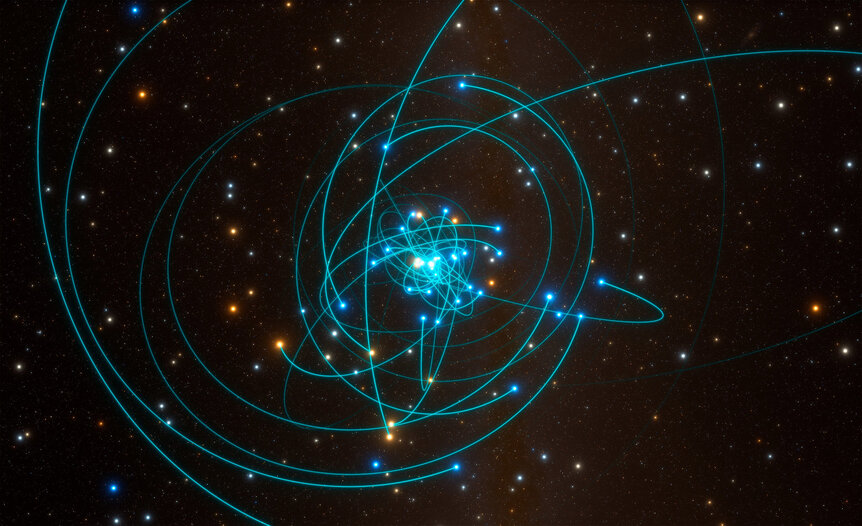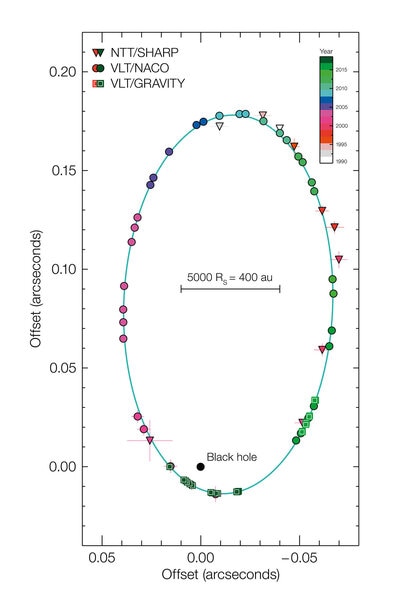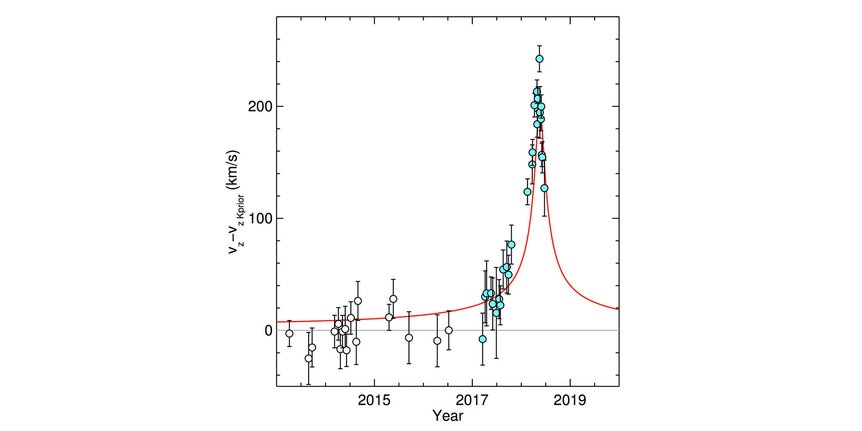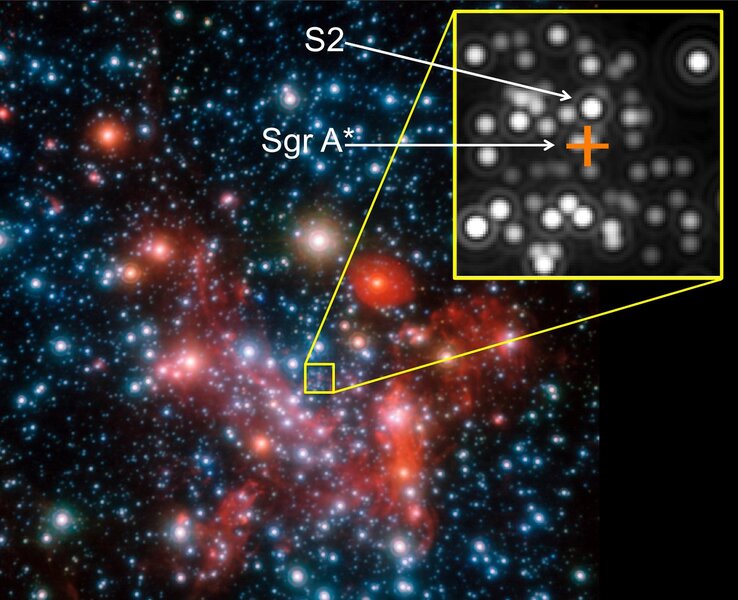Create a free profile to get unlimited access to exclusive videos, sweepstakes, and more!
A star's plunge toward a huge black hole shows — again! — that Einstein was pretty smart
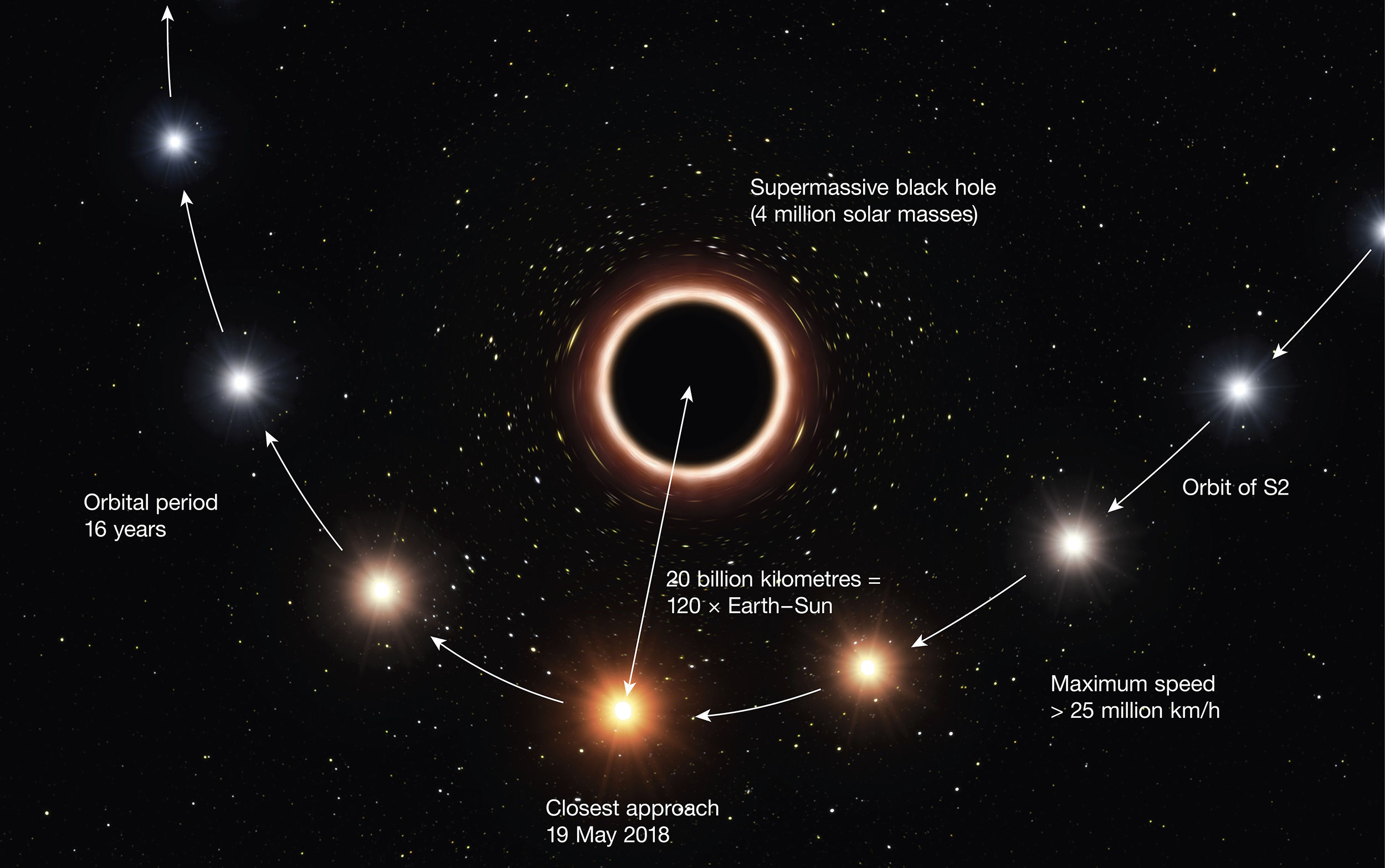
On May 19, 2018, a star in the center of our galaxy screamed past a huge black hole at a hair-raisingly close distance and at a ridiculously high speed. It got so close that the light the star emitted was affected by the black hole's warping of space, in a way so subtle it couldn't be detected until now, yet so obvious to modern tech that it was easily teased out of the data.
Amazingly, all of this — and more yet to come — went exactly as predicted. And, like so many tests before it, it showed Einstein's Theory of Relativity is right.
Being able to write something like that is why I love my job. I also love being able to explain it to you, honestly, so let's get to that, shall we?
We live in the Milky Way galaxy, a flat disk of gas, dust, stars, and dark matter. In the very center sits a monster: a supermassive black hole. Every big galaxy has one, and we think that they form at the same time as the galaxies themselves, affecting each other's growth and evolution. Understanding our own central black hole is a key to understanding the galaxy.
The Milky Way's black hole — called Sgr A* (said out loud, "Sagittarius A star") — has a mass of 4.1 million times that of the Sun, packed into a space that could easily fit in between the Sun and Mercury's orbit. Black holes have intense gravity because they're massive, of course, and also because they're small. But a side effect of this is that you can get pretty close to a black hole, and as you do the gravitational effects get far, far stronger.
As it happens, the center of the Milky Way is a busy place. Millions of stars make it their home, and a few, just a handful, are on orbits that take them very close to the black hole. One of these stars, called S2 (or sometimes S02), gets incredibly close to Sgr A*. Its orbit is so tight it circles the black hole once every 16 years, and at periastron (closest approach) it's a mere 18 billion kilometers away from it. That's four times the distance Neptune is from the Sun! In astronomical terms, that's a microscopically close shave.
When it passes the black hole, S2 is moving at 7,650 kilometers per second, more than 2% the speed of light! Just writing that down made the hair on the back of my neck stand up. That's fast.
S2 is a luminous star, making it observable from Earth even though it's tens of thousands of light years away. Astronomers have been observing it for decades, and have easily been able to track its motion. And I mean that literally: It can be seen to move relative to the stars around it. In fact, 45 stars near Sgr A* have been tracked over the years, but S2 gets the closest and is the fastest. You can see this motion for yourself in this video, made using actual observations of the galactic center:
Whoa.
S2 last passed the black hole in 2002, and in 2018 astronomers were ready for the next. Let me take a moment to say that I wrote about the preparations for this event back in March 2018, and that article has a lot of the backstory for the most recent observations. Please take a few minutes to read it, then come back here!
OK, so now you have the background. For this periastron pass, astronomers had three incredible instruments at the ready: SINFONI, GRAVITY, and NACO, which were used to make extremely precise measurements of the position and velocity of S2 as it plunged down toward and then flew back away from its invisible supermassive betrothed.
Astronomers observed it in the weeks before the pass, and after as well. Incredibly, the GRAVITY instrument could detect the star's motion over a single day! Think on that: This star's physical motion through space was so fast a telescope on Earth more than 26,500 light years away could spot it.
When all was said and done, they got enough observations to make a very accurate map of its orbit.
I'm not gonna lie to you: Seeing this made me smile. That's amazing. You can clearly see the elliptical shape of the orbit, and how they got a lot of observations made near periastron. In space, the top of the orbit in the diagram is tipped toward us, and the bottom is tipped away. S2 moved down and to the left from the upper right over time, then whipped around the black hole, and moved to the upper left.
The motion of the star creates a shift in its light, moving it to the red part of the spectrum when it moves away, and to the blue part of the spectrum as it heads toward us. Before it passed the black hole it was moving away from us, and after it was moving toward us.
And that's where this gets very cool.
As I wrote in the earlier article, besides the velocity of the star affecting its redshift, the gravity of the black hole does too: The light has to climb out of the gravity well of Sgr A*, and —as Einstein's Theory of Relativity demands — that robs it of energy, creating a redshift. In the earlier article I mentioned that this gravitational redshift is predicted to be equivalent to a velocity of about 200 km/sec; in other words a star whose light has to climb out of the black hole’s gravity and a star that is moving away from us at 200 km/sec would show the same redshift. So on top of the star's redshift due to its motion we should see an additional 200 km/sec redshift when it's at its closest to the black hole.
And what did they see? This:
Oh yeah. The plot shows the additional redshift due to effects other than orbital velocity, and boom. Right at periastron the redshift peaks at 200 km/sec. Right on the money.
So, yeah. Einstein was right. As we've known all along.
And the astronomers who made these observations still aren't done. As I wrote in the previous article as well, the gravity of the black hole affects the entire orbit of S2, causing it to rotate very slightly around (if you draw a line through its long axis, that line rotates as the star passes the black hole). This precession, as it’s called, is slight, but should be detectable in observations by around 2020. There are even more subtle effects that may become clear with deeper observations in years to come.
Needless to say, I love this. By now, no astronomer seriously doubts Relativity is wrong; it's been shown correct literally millions of times (particle accelerators depend on it, just as your GPS does). But what this shows is that our technology has improved to the point where we can detect the reach of Einstein's physics, even across space, time, and deep into the literally space-bending maw of a supermassive black hole.
The Universe is far more complex then we could've thought before Einstein, and even now, after more than a century, we're still measuring just how odd it is. I suspect we'll be doing so for centuries to come.
